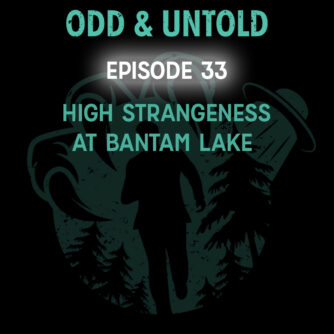One of the very first unexplained mysteries to capture my young imagination was the Tunguska Event from 1908. For those not in the know, the Tunguska Event was an enormous explosion that occurred in the remote Siberian wilderness back in 1908. The blast flattened almost 80 million tress, and decimated an area of over 800 square miles. The skies in faraway countries would glow overnight, and it was said a newspaper could be read at night in Sweden and Scotland. There are even photographs taken at night in these places. The site was so remote, and the political climate so volatile at the time, that researchers didn’t reach the site until 1921. There was no crater to be found, and no remnants of any asteroid seemed to be present. For many years, the event remained an enigma, with theories ranging from the mundane (simply a meteorite that exploded in the atmosphere before any solid matter hit the ground, or a comet made up of ice that evaporated before impact) to the more outlandish (a disabled UFO that exploded, a piece of a black hole or antimatter colliding with the earth, etc.). The most prominently accepted theory has been that it was either an object that disintegrated prior to impact, or an object that “bounced off” the atmosphere due to the angle at which it hit, almost like a stone skipping off the surface of a calm lake. Now there’s a new scientific paper to back up the latter theory.
The Tunguska event, a seismic blast that rocked a remote Siberian forest more than a century ago, is believed to have been caused by a meteor that exploded before it hit the ground. A new study sheds more light on the asteroid, noting it may have never actually hit Earth at all.
The research, published in Monthly Notices of the Royal Astronomical Society, theorizes that the asteroid caused a shock wave that resulted in nearly 800 square miles in the Siberian forest to be flattened within seconds, but it never actually hit Earth, as it curved away shortly before breaking up, continuing into space.
“We argue that the Tunguska event was caused by an iron asteroid body, which passed through the Earth’s atmosphere and continued to the near-solar orbit,” researchers wrote in the study’s abstract.
The 1908 blast is generally estimated to have been about 10 megatons. No injuries were reported, but some 80 million trees over approximately 800 square miles were leveled.
The researchers, including co-author Vladimir Pariev, looked at a number of different computer models, testing objects as small as 164 feet across all the way up to 656 feet across, comprised of rock, ice or iron. They were also given different trajectory paths that brought them within 6 to 10 miles of the Earth’s surface.
The rock and ice objects disintegrated in the Earth’s atmosphere, but the iron object did not.
“Only asteroids made of iron larger than 100 m [328 feet] in diameter can survive and not get cracked and fragmented into many separate pieces,” the researchers said in comments obtained by LiveScience.
“Probably, the most realistic version explaining the Tunguska phenomenon is the through passage of the iron asteroid body as the most resistible to fragmentation across the Earth’s atmosphere at a minimum altitude of 10–15 km with the length of the trajectory in the atmosphere of about 3000 km and a subsequent exit of this asteroid body into the outer space to the near-solar orbit,” the researchers wrote in the study. “This version is supported by the fact that there are no remnants of this body and craters on the surface of the Earth.”
The researchers estimate the meteor was likely flying at a speed of 45,000 mph, hitting the atmosphere at a shallow angle, somewhere between 9 and 12 degrees. If it were comprised of iron, some of the iron would have escaped as a gas and plasma and become almost impossible to find or differentiate between terrestrial iron oxides, the study added.
No fragments of an asteroid or comet have ever been found.
It’s unclear the size of the impact an iron meteor that “grazed” the Earth could produce, but Pariev told LiveScience in an email the research found the estimates (between 328 and 656 feet in diameter) could be powerful enough to flatten trees and cause the damage seen in the Tunguska event.
“Detailed calculations of the shock waves from a grazing asteroid is the subject of our ongoing research,” Pariev added in his email.
The explosion near the Podkamennaya Tunguska River on June 30, 1908, reportedly flattened some 500,000 acres of Siberian forest. Scientists calculated the Tunguska explosion could have been roughly as strong as 20 megatons of TNT, or roughly 1,000 times more powerful than the atomic bomb dropped on Hiroshima.
In 2013, a meteor entered the Earth’s atmosphere on Feb. 15, 2013, over Russia and crashed, an occurrence now known as the Chelyabinsk Event.
The result of the explosion caused damage to more than 7,200 buildings and resulted in nearly 1,500 injuries, though none of them were fatal.
Like any good mystery, the Tunguska Event continues to fascinate, mainly because we may never truly know what happened there. Between the fact that it happened so long ago now, combined with the remoteness of the location, any real evidence may be forever lost to time.





